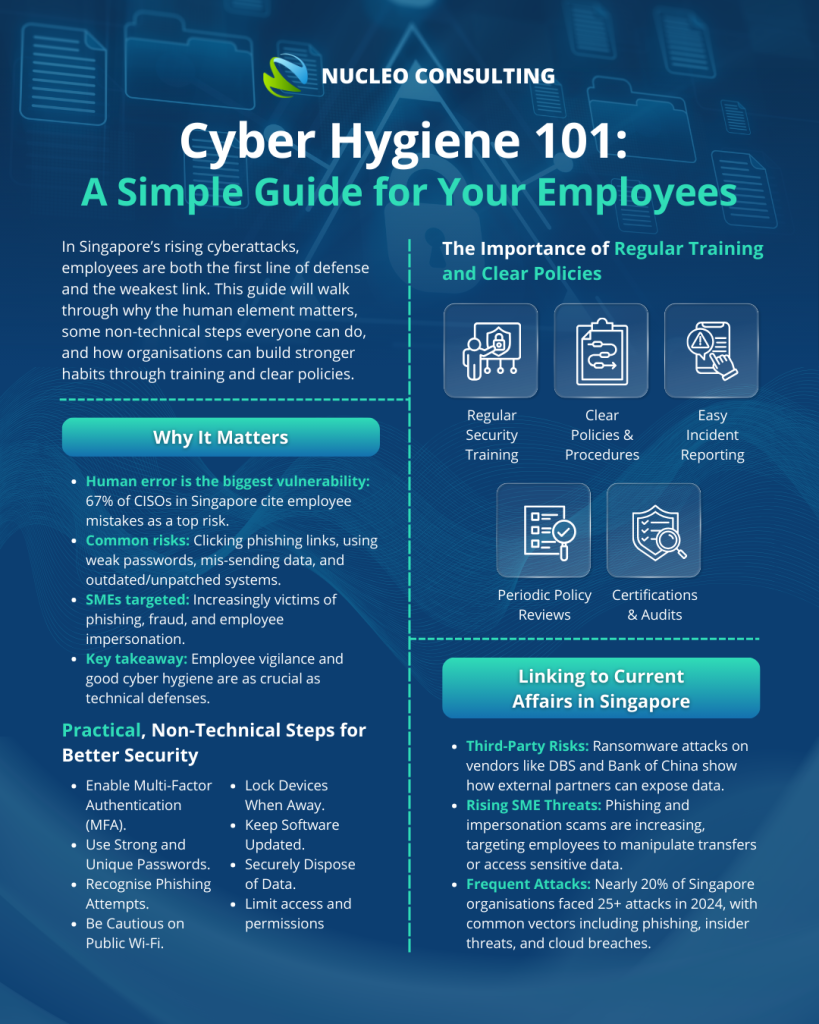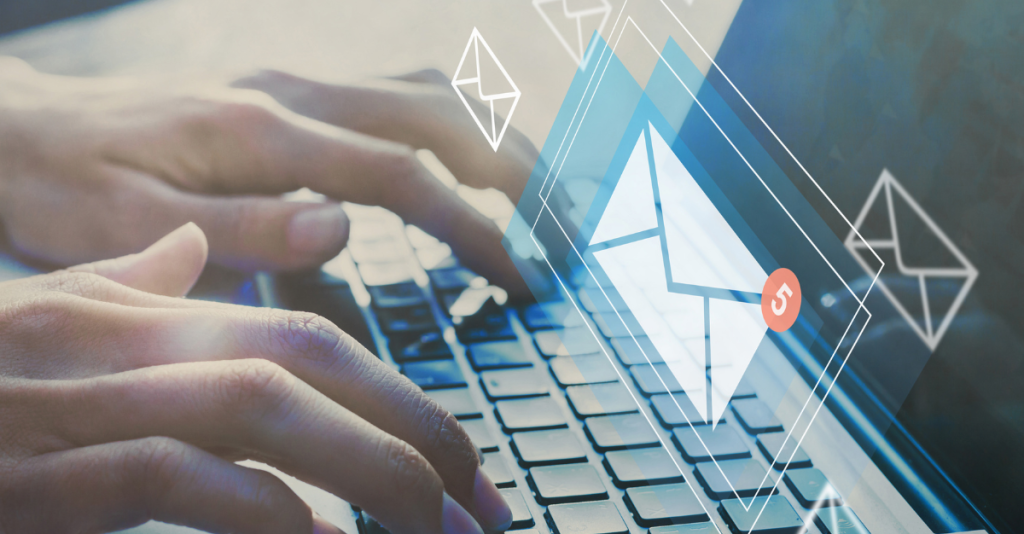
Introduction
In an environment where cyberattacks are increasingly frequent in Singapore — affecting businesses large and small — employees are often both the first line of defence and the weakest link. While firewalls, encryption, and antivirus tools help, it’s human behaviour that often opens the door. This guide will walk through why the human element matters, some non-technical steps everyone can do, and how organisations can build stronger habits through training and clear policies.
1. The Human Element in Cybersecurity
Technical controls are essential, but people make mistakes. In Singapore, 67% of CISOs say human error remains the biggest vulnerability. Singapore Business Review And in broader Asia, many studies show that a very large portion of breaches stem from employee mistakes (e.g. clicking phishing links, using weak passwords, mis-sending data).
For example:
According to the Singapore Cyber Landscape 2024/2025 report by the Cyber Security Agency of Singapore (CSA), ransomware and malware infections remain key concerns, with many cases linked to outdated or unpatched systems — a reminder that employee vigilance and good cyber hygiene are as important as technical defences.
Another news item: SMEs are increasingly victims of phishing and fraud, sometimes involving impersonation of employees.
For more on how employees can reduce these risks, see Cyber Security: Your Responsibility as an Employee, which outlines practical steps individuals should take to avoid being the weak link.
Thus, understanding and reducing risk at the human level is critical.
2. Practical, Non-Technical Steps for Better Security

Here is a checklist of things employees can do. These are simple, non-technical, but very effective:
| Action | Why It Helps / What to Watch Out For |
| Use multi-factor authentication (MFA) wherever possible (e.g. for email, VPN, administrative tools) | Even if a password is compromised, MFA adds an extra barrier. |
| Create strong, unique passwords (not reused across systems) | Avoid “123456”, repeated use, or guessable passwords. Use passphrases or password managers if allowed. |
| Recognise phishing emails: check the sender address carefully, look for suspicious links or requests | If an email asks for credentials, financial transfers, or urgent action, pause and double-check. Hover over links, verify legitimacy. |
| Be cautious about public Wi-Fi and network connections | Public networks can be less secure. Use VPNs when working in cafés or airports; avoid accessing sensitive systems on unsecured networks. |
| Lock your workstation or mobile device when away | Even short distractions can allow someone to access your open sessions. |
| Keep software and apps up to date | Updates often patch vulnerabilities. Don’t postpone OS / security/ browser updates. |
| Use proper disposal for sensitive data and devices | Shred printed documents; securely erase devices; follow company policies for disposing of old hardware. |
| Limit access and permissions: only use data and systems you need for your role | Least-privilege reduces damage if credentials are reused or compromised. |
For additional preventive measures that apply not only to employees but also to businesses as a whole, see 5 Ways to Stop Cyber Attacks, which provides broader organisational strategies that complement the checklist above.
3. The Importance of Regular Training and Clear Policies
A proactive approach is essential. Here’s how companies can embed good cyber hygiene into their culture:
- Regular, engaging security awareness training — not just once a year. Include phishing simulations, scenario-based learning, reminders of recent local incidents (so employees see relevance).
- Clear policies and procedures for handling sensitive information: who can access what, how to dispose of data, what to do during suspected breaches.
- Incident reporting channels that are easy and encourage reporting mistakes without blame. If someone spots a suspicious email or potential leak, they should feel safe to escalate.
- Periodic reviews of policies, updating them based on new threats (e.g. deepfake scams, AI phishing, supply chain vulnerabilities).
- Tie in certification and audits, e.g. following ISO 27001 practices, or using frameworks like Cyber Essentials / Cyber Trust (if applicable for the organisation).
If your company doesn’t yet have a clear framework, The Importance of Cybersecurity explains why policies, training, and risk assessments are necessary at every stage of business.
4. Linking to Current Affairs in Singapore
Connecting this advice to recent events helps make it real for employees:
- The printing vendor ransomware attack that affected DBS and Bank of China customers shows how third-party service providers can expose data, even when main systems are intact.
- SME phishing and fraud incidents are rising, especially impersonation scams where attackers act as employees to manipulate transfers or share sensitive data.
- According to recent surveys, nearly 20% of organisations in Singapore reported more than 25 cyber-attacks in 2024, averaging at least one attack every two weeks. Common vectors: phishing, insider threats, cloud breaches.
These cases often reflect avoidable mistakes. See Top 5 Cybersecurity Mistakes Businesses Make, which highlights common pitfalls — many rooted in weak employee practices — that attackers continue to exploit.
Conclusion
Cyber hygiene isn’t about complex tech or expensive tools alone — it’s about establishing good habits, policies, and awareness. When employees understand their role, and when organisations invest in regular training, clear policies, and easy reporting, the risk drops significantly. It’s in everyone’s interest: employees, leadership, and customers.
#CyberSecuritySG #CyberHygiene #ITSupport #EmployeeAwareness #Phishing #DataProtection #SMEsg #CyberSafety #InfoSec #ITConsulting